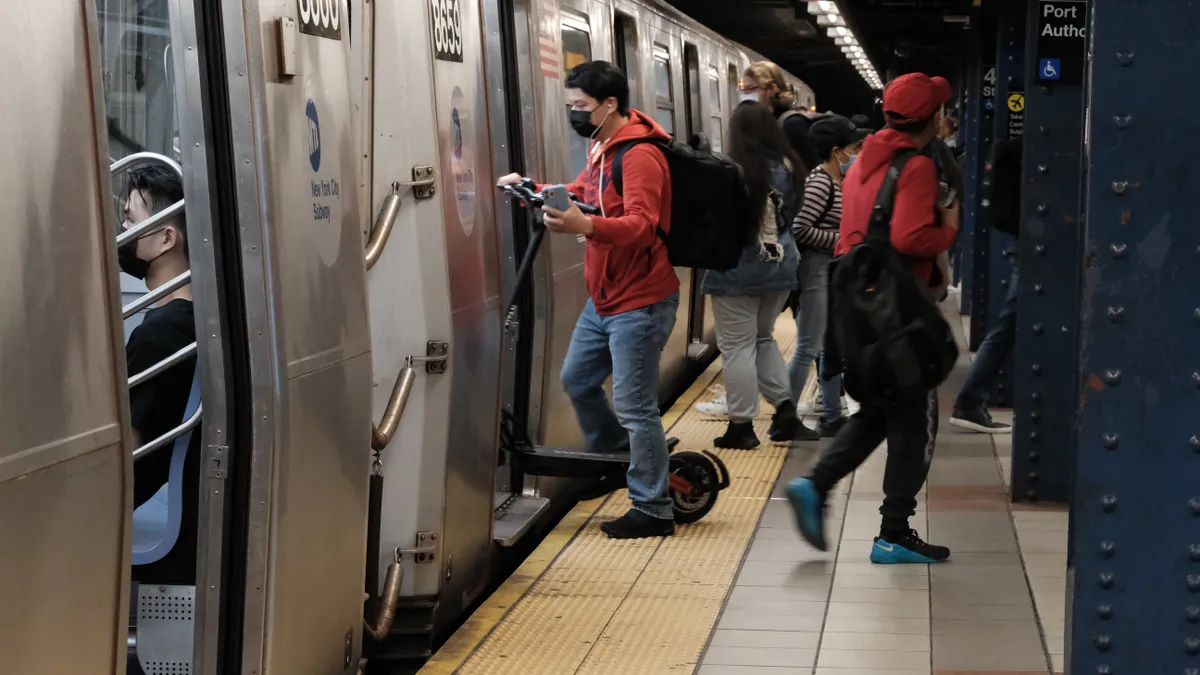The New York Metropolitan Transportation Authority, North America's largest transportation network, may need to raise fares, cut service or find new subsidies when its federal COVID-19 pandemic relief funds run out in 2025, according to a report issued Tuesday by the New York State comptroller.
The MTA relies on farebox revenue more than many other large transit agencies. While agencies serving Boston, Chicago, Philadelphia and Washington, D.C. received 31% to 35.7% of revenue from fares in 2019, MTA fares accounted for 42.1% of revenue that year. With lower ridership today, the MTA’s farebox revenue is just 24.5% of the agency’s $15.7 billion revenue.
The comptroller questioned the MTA’s plan to reduce the budget gap by paying down some of its debt, which stands at nearly $45 billion according to the agency’s November 2022 finance committee book. “The MTA has suggested it can reduce budget gaps by paying debt off early, but more can be done now to find cost savings and generate revenue to close gaps sooner,” New York State Comptroller Thomas DiNapoli said in a press release.
Weekday ridership remains at about 60% to 65% of pre-pandemic levels, and the MTA’s consultant, McKinsey & Company, projects ridership to reach between 73% and 88% by 2026. Asked if ridership will ever return to pre-pandemic levels during a recent interview on NY1’s Inside City Hall, MTA Chairman Janno Lieber said, “It's unclear right now. Work from home is here to stay.”
This is not the first time the state comptroller has warned the MTA about its financial situation. In July, the comptroller said that at current ridership levels, the agency would face increasing deficits beginning in 2025.
However, at a Board committee meeting Tuesday, Mark Young, the MTA’s deputy chief for management and budget, said that farebox revenue year-to-date in October was $151 million above the mid-year plan and that year-to-date expenses were $447 million less than anticipated.
“No one wants to see steep fare hikes or service cuts,” said DiNapoli in a press release. “However, it is unclear how the MTA will avoid these outcomes unless it lays out additional options for the public and its funding partners to consider.”












